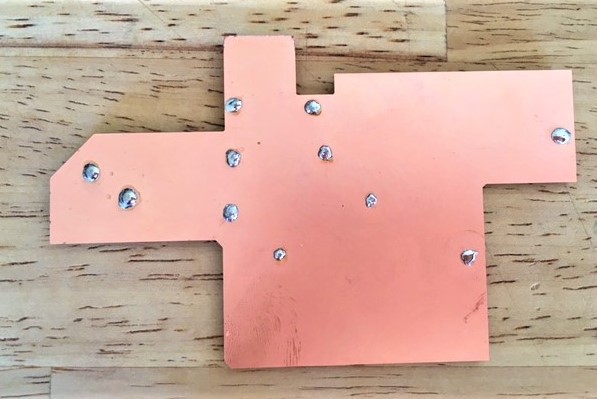My PCB design is based on Neil’s hello.D11C.serial.5V.1 board which utilizes a ATSAMD11C microcontroller. Adding to the base design, I incorporated a circuit containing a button and LED that can be controlled via the MCU per the week's assignment (outlined in blue below). I also added an area to incorporate an additional power source (e.g., 12V) and set of N-type MOSFETs to power electromagnet coils to drive an induction machine (outlined in orange below). To provide opportunities to expand use of the PCB, I added resistors and a connector to jump out unused pins of the MCUs (outlined in green below). To simplify trace routing I opted to create a board with the bottom layer set to ground with connections to ground made through vias. As will be discussed in detail below, the incorporation of vias proved difficult with a number of lessons learned. I used 20 mil width traces throughout the 12 V supply region of my board and used 10 mil traces everywhere else. The lower right image shows a 2D depiction of my board with additional component information and is hyperlinked to the CAD file. The bottom image is a 3D rendering of my board.

Note, 3D rendering shows a 12V barrel jack that is not available through the fab lab inventory. This component was used to provide an adequate footprint for soldering a wired barrel jack to the board.


























